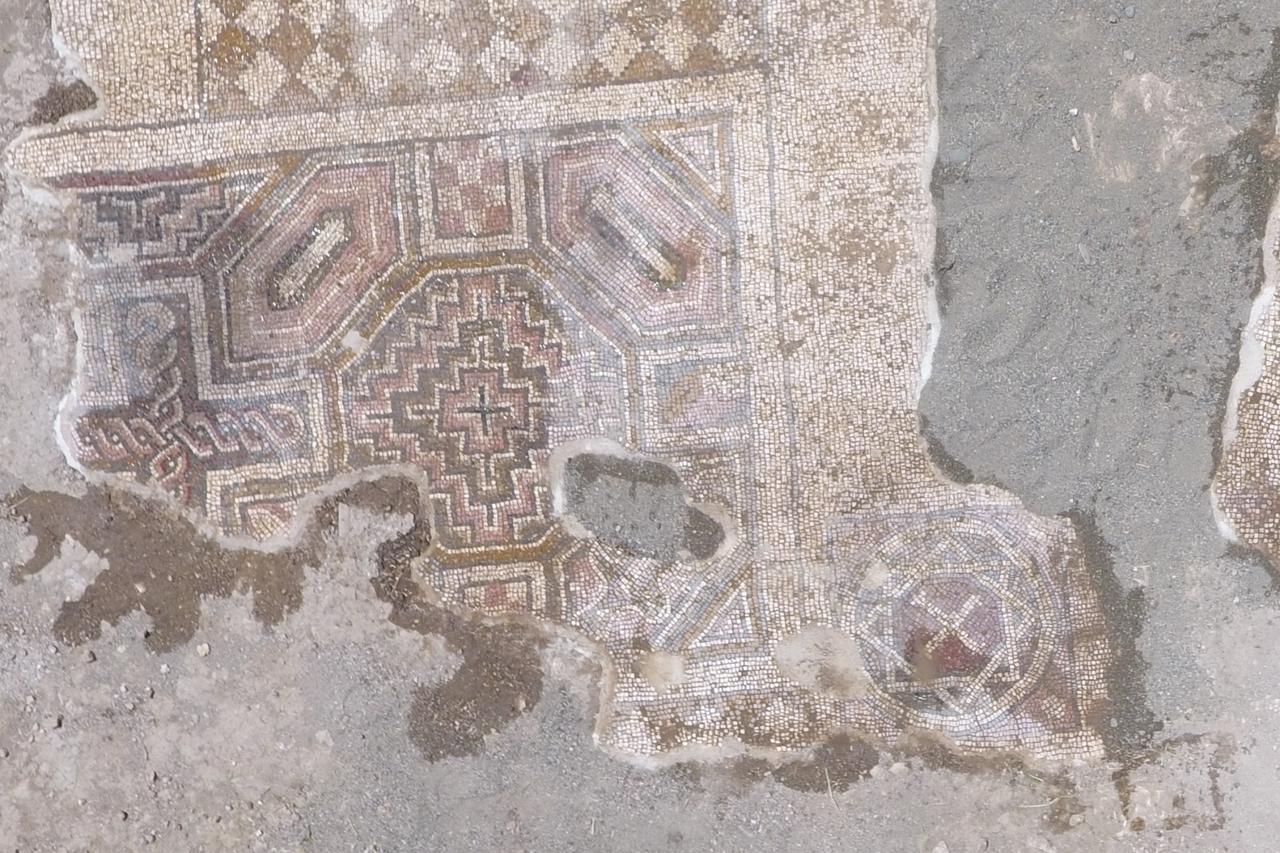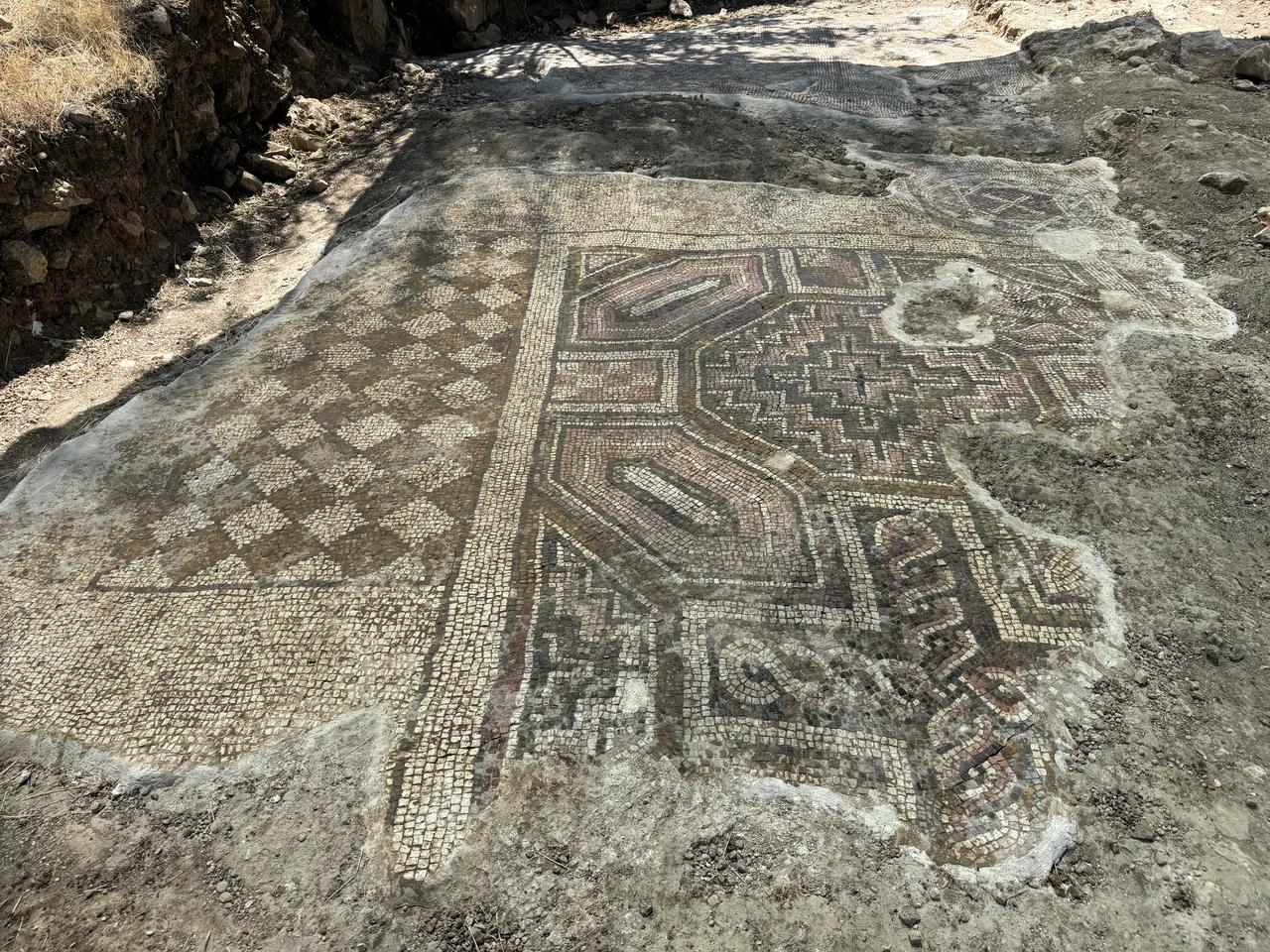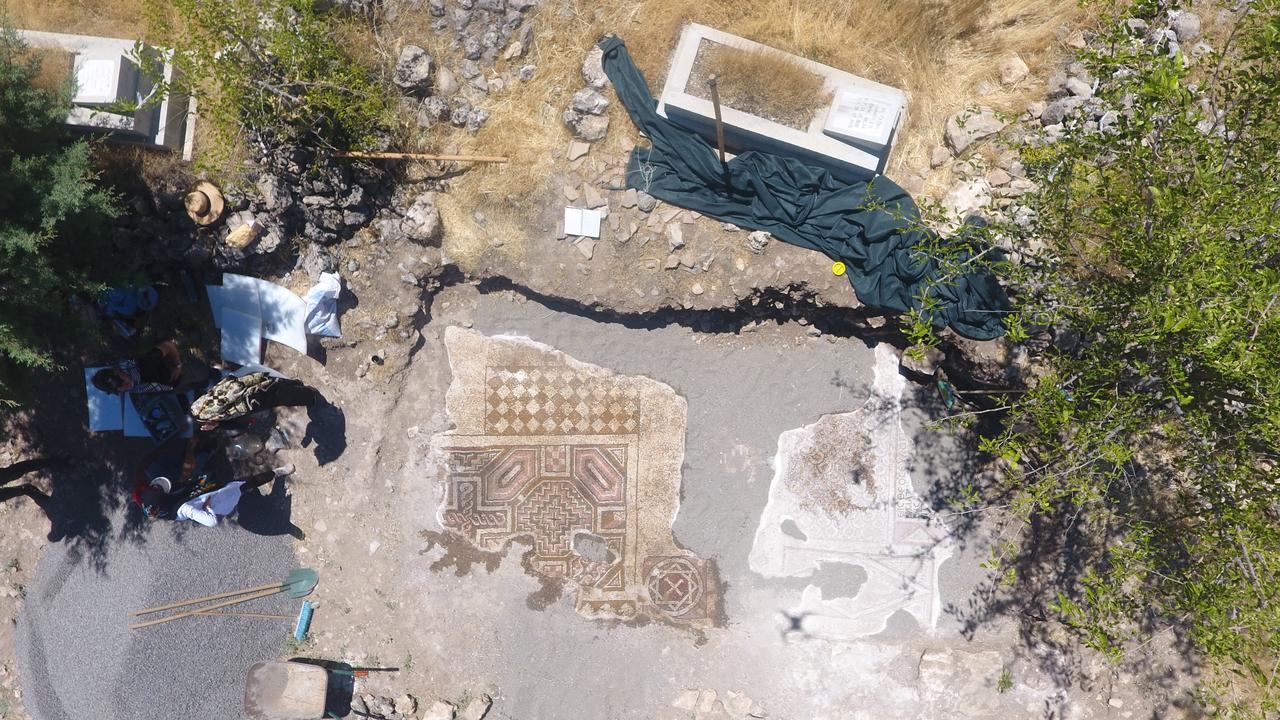
A burial in the rural Ozbilek neighborhood of Ergani district in Diyarbakir, Türkiye, led to the discovery of a 35-square-meter mosaic dating to the Late Roman era. Workers using construction equipment for a grave unexpectedly uncovered the artifact, which features a rare combination: a Star of David containing a cross, alongside a six-line inscription in ancient Greek.

Following the discovery on March 8, the Diyarbakir Museum Directorate launched a rescue excavation on March 11. The team of archaeologists, art historians, restorers, and workers carried out a three-week operation that revealed two separate mosaic sections with distinct geometric motifs. About 70% of the mosaic remains intact, while the rest has been lost to time.
The most striking elements are the Star of David enclosing a cross and the largely eroded six-line Greek inscription, which is still being studied. Nearby, motifs such as octagons, rhombuses, droplets, and a large frieze were identified.

Mujdat Gizligol, acting director of Diyarbakir Museum, explained that this finding challenges a common historical assumption that the Roman Empire did not establish lasting settlements east of the Euphrates. He noted that the discovery shows “the Romans carried out long-term activities in this region and left behind enduring works.”
The mosaic is the second to be found in situ in Diyarbakir, following an earlier find in the village of Ozgider in Cinar district. It is believed to have belonged to a Roman villa near a now-dry stream, part of an ancient settlement.

After the rescue excavation, the site was covered with protective sheeting and reburied to preserve it. Authorities aim to secure the area for future scientific excavations.
Gizligol stated that the location, about 66 kilometers (41.01 miles) from the city center, is currently used as a local cemetery, and suggested that a new burial ground will be needed to protect the archaeological remains.